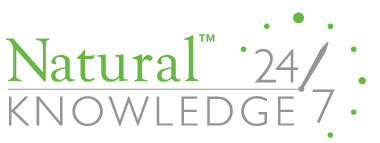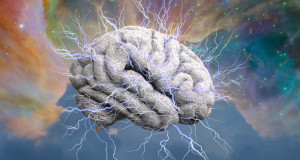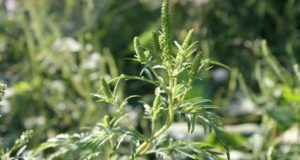What was your life like at age 19? For most people, the answer would involve trudging through their first year of college, or possibly adjusting to life in the workforce after finishing high school. At such a young age, few people reach the heights attained by Jordan Spieth. In July 2013, the nineteen-year old became the youngest professional golfer to win a PGA tournament in 82 years, taking first place at the 2013 John Deere Classic. And he only had to survive a five-hole playoff with two other contestants (one of them being the defending tournament champion) to pull it off.
When talking about the benefits of athletics, golf isn’t usually the first sport to come to mind. Though golf might appear to be little more than a leisurely activity, this sport can actually be highly beneficial to the body. You don’t have to be as successful as Jordan Spieth to reap the benefits of playing golf; according to research, even amateur golfers can improve their health by regularly playing this centuries-old sport.
Facts about the Game
Before we get into the impact of golf on the human body, take a look at some of these interesting (if not a tad strange) facts about golf history.
– Golf indeed has a long past, dating back to 15th– century Scotland. The first recorded mention of golf can be traced to a 1457 edict issued by the Scottish king James II.
– Golf wasn’t the only European game that made good use of balls, sticks and various types of goal posts. During the 1300s the Dutch created the similarly-named “kolf,” in which players hit balls against posts wedged into the ground. In 14th century France, a game called “jeu de mail” required players to use hammers to hit balls through hoops. The English also got in on the act, creating palle maille, a sport that served as the precursor to croquet.
– About that 1457 document mentioning golf? Believe it or not, it was an act that banned golf, along with a number of other sports. Though this might seem like a complete overreaction on the part of the Scottish monarch, you may be able to understand James II’s actions after reading about the reasoning behind the ban. James II worried that his soldiers were spending an excessive amount of time playing golf, at the cost of honing their archery skills. Given that Scotland was frequently at war with the neighboring English, James II needed his army to be as skilled with the bow and arrow as possible.
– The 1457 ban was twice reinforced by successive Scottish kings, first in 1470 (by James III) and again in 1490 (by James IV). The circumstances that ended the ban are as interesting as the ban itself. In 1502, England and Scotland signed the Treaty of Perpetual Peace, an agreement aimed at ending hostilities between the two countries (it didn’t work). As part of the treaty, the Scottish ban on golf was lifted. Ironically enough, King James IV of Scotland became one of the more famous golf enthusiasts, playing the first officially documented match in 1504.
– The earliest golf balls were stuffed with feathers.
– US President Woodrow Wilson painted his golf balls black. There was a very practical reason behind this cosmetic decision; black colored golf balls wouldn’t easily get lost in mounds of snow.
– Can you imaging teeing off on a pile of sand? Until the turn of the 20th century, that’s what golfers used to launch their first stroke on each hole.
– It’s hard to imagine playing a round of golf without a bag to carry your clubs. But before golf bags were created in the 1890s, caddies had to make do with tying a strap around the clubs they carried.
Golf and Your Health
Did you know that you could burn off a substantial amount of calories by playing an hour of golf? According to the Mayo Clinic’s website, a 160 pound person expands 329 calories after playing golf for an hour (this figure assumes that the golfer walks from one hole to the next, instead of riding a golf cart, and also carries his or her clubs). For golfers tipping the scales at 200 and 240 pounds, this amount increases to 410 and 491 calories, respectively. Harvard Health Publications has somewhat different figures, yet still extols golf’s calorie-burning properties:
| Weight of Golfer | Calories Burned in One Hour |
| 125 pounds | 105 |
| 155 pounds | 130 |
| 185 pounds | 155 |
The information above assumes that the golfer travels on foot between each hole, and also refrains from using a caddy.
Aside from its ability to burn off extraneous calories, additional evidence suggests that golf can also help ward off some very troubling health problems. The sport of golf qualifies as a moderately intense physical activity, provided that the golfer eschews both a golf cart and a caddy. The Centers for Disease Control and Prevention (CDC) notes that getting 150 weekly minutes of such activity reduces your odds of suffering the following maladies:
- Cardiovascular disease
- High Cholesterol
- Type 2 diabetes
- Metabolic syndrome
- Some types of cancer
As an added bonus, swinging a golf club gives this list of muscles a solid workout:
Back and Abdominal Muscles – You don’t have to be a golfing aficionado to understand that the back plays an essential role in every golf swing. The muscles that enable to the torso to smoothly rotate are the rotatores, external abdominal obliques and multifidus. The rotatores are found along the spinal column, whereas the multifidus muscles are positioned atop the rotatores. The external abdominal obliques cover the sides and part of the front of the body’s abdominal area.
Gluteus Maximus – The gluteus maximus is official medical term for the buttocks (ok, stop giggling). Despite being used as fodder for countless jokes, the body relies upon the gluteus maximus muscles to rotate its thigh muscles. When it comes to golf, tightening the glutes before and during the swing helps keep the golfer’s legs still. In turn, this allows the golfer’s swing to be both fluid and powerful.
Pectoralis Major – Arguably few muscles get as much attention as the pectroalis major, which spans from shoulder to shoulder and accounts for most of the chest’s muscle mass. The body needs the pectoralis major to extend its arms and flex its shoulders.
Latissimus Dorsi – Your pectroalis major would have a hard time doing its job without the latissimus dorsi, a wide muscle stretching from the armpit to the lower back. The latissimus dorsi enables the body to rotate and extend its arms, and also allows it to bring these appendages closer to the body. All of these movements, of course, are necessary for swinging a golf club.
Forearm Muscles – The forearm muscles often get overshadowed by the nearby biceps, but they are still a key part of an effective golf swing. After all, it’s hard to get better at golf if you are unable to strongly grasp a golf club. The muscles that contribute to a strong golf club grip include the flexor digitorum superficialis (which allow the body to flex its hand and parts of its fingers), the flexor digitorum profundus (which also helps the body flex its fingers) and the flexor pollicis longus (a muscle that enables you to move your thumb).
The preceding article was written by an employee of Natural Knowledge 24/7.
 Natural Knowledge 24/7 Educate yourself with nutrition, health and fitness knowledge.
Natural Knowledge 24/7 Educate yourself with nutrition, health and fitness knowledge.





